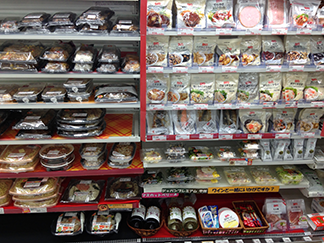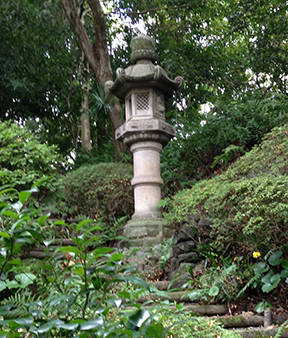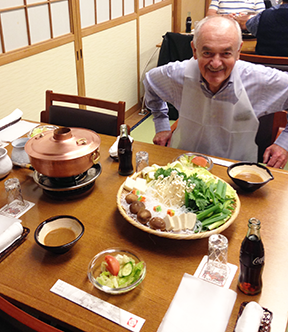SSCS Was There: Kyoto, Japan (Part 1)
Customer service isn’t just king in Asian C-stores…it’s everything.

Packaged Delights at one of Circle K’s Japanese C-stores.
Our Sales Management team just returned from the International Asian Forum at the Hyatt Regency in Kyoto, Japan, hosted by Circle K Sunkus Co., Ltd., the company that manages Circle K and Sunkus convenience stores in that country (Circle K is a corporate partner of SSCS). The forum gave us a great opportunity to further inform our perspective on the Asian C-store markets, markets that, while distinct, have one thing in common: they are absolutely exploding with growth and bursting with commercial potential. The commercial vitality of the region was symbolized in the panorama that greeted SSCS Sales Manager Shawn Herrick on the last night of his trip. “We had a layover in Seoul, South Korea on our way home,” Herrick recalls. “I happened to look out my downtown hotel window and was stunned by the sheer volume of growth visible as far as the eye could see. In the middle of a major American city you might view three or four construction cranes from any single vantage point, but I could see 40 or 50 high rise cranes in operation at the same time, for housing development, commercial development, and everything in-between. Acres and acres of land had been cleared, scraped and prepped for the next set of projects. Ten years from now you probably won’t be able to recognize the skyline.”

Scene from a garden in the Kyoto Hyatt Regency.
This overheated, go-go business atmosphere, while holding much promise for the future, also comes with its share of challenges, in large part the kind of logistical problems often associated with emerging economies. Putting an infrastructure into place for water, electricity and other utilities cannot be taken for granted. The reliability of vendors can be a crap shoot, too, which is why the largest Asian C-store chains create their own distribution centers to add reliability and stability to product delivery. It’s also an environment that ratchets up the competitive factor by a multiple of ten. “You walk down a street in Japan and you can’t help but notice that C-stores are doing everything they can to make themselves an integral part of the consumer’s day,” Herrick explains. “Part of the reason they seem so pervasive is that in many countries, the operation doesn’t pump fuel. This means stores can be located anywhere, front and center, vying for the customer’s attention in strip malls, business parks, even apartment high rises.”

SSCS VP of Sales and Marketing Al Stoeberl anticipating a feast at Nanzenji Junsei, an outstanding restaurant in Kyoto.
The Asian C-store’s go-to weapon for winning in this highly competitive arena is taking customer service to another level entirely, something that can be obvious the first time you walk through the doors of a store. “Customer service is everything and every employee knows it,” Herrick states. “It’s a dramatic difference in approach from what we’re used to in the States. I would estimate that average staffing is a little more than double what you see in the U.S. You walk in and someone is there waiting to assist you, answer questions, or address concerns.” To ensure that customers get a quality of service that will compel them to return more than once in the same day, the largest and most successful C-store operators provide in-depth, standardized training to their team members, in Training Academies that ensure staff understands the ins and outs of every part of the business. “The industry and the culture perceive service as a respected business and act accordingly,” adds Herrick. “It was an eye-opener for me, providing a share of valuable lessons I could hardly wait to take back home.” In Part 2 we’ll take you into the heart of a few Japanese C-stores with a generous set of photos taken by our sales team. See you then!






Leave A Comment